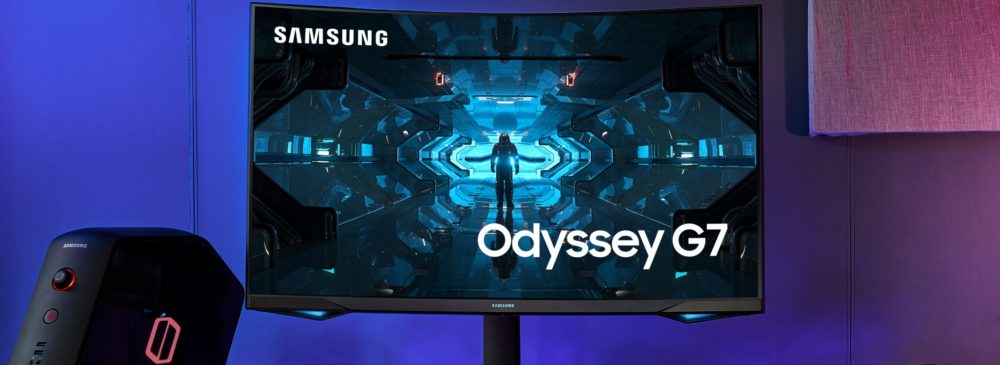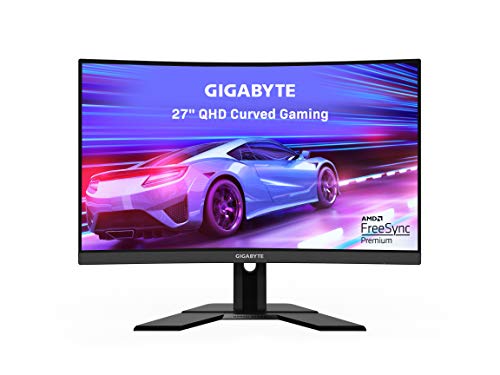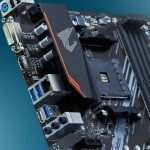The RX 6800 and 6800 XT are two of the three graphics cards that AMD has released in November 2020.
Armed with features like RDNA architecture, 7nm process, and Smart Access Memory (SAM), these graphics cards promise to go neck-to-neck against Nvidia’s well-praised but often out-of-stock RTX 3070 and 3080 graphics cards.
But if you’re not someone who’s building/upgrading your PC for the first time, you know that a graphics card is just one of the many components of the PC. And if you want to have your gaming/productivity experience to the maximum, then your other PC components must be capable as well.
Most people downplay the importance of a monitor in their rig, and that should not be the case. After all, it is your monitor that will display all those stunning graphics generated by your $500+ graphics card. This is the reason why we have decided to publish this post about suitable monitors for 6800/6800XT.
Although 6800 and 6800 XT are two different models with different number of compute units (60 vs 72) and stream processors (3840 vs 4608), both of them share the same 16GB GDDR6 memory and 128 MB Infinity Cache.
Furthermore, a price difference of fewer than 100 bucks only strengthens our idea of placing both of these cards together in this list.
Best Monitors For RX 6800 And RX 6800XT
Like always, we have included monitors with different sizes and resolutions, and you can choose one according to your taste.
1. ASUS TUF Gaming VG289Q: Best Budget 4K Monitor For 6800/6800XT
- 28-inch 4K (3840x2160) IPS DCI-P3 grade gaming monitor for stunning crisp and detailed visuals
- Compatible with industry-standard HDR10 high dynamic range for color and brightness levels that exceed the capabilities of ordinary monitors
- AMD FreeSync technology to eliminate screen tearing and choppy frame rates (supports both Adaptive-sync with AMD Radeon and NVIDIA GeForce graphics cards)
The first model in our list is the VG289Q of the Asus TUF Gaming Series.
Launched as an affordable option against the more expensive 4K displays, it’s one of the first monitors to feature a 28-inch 4K IPS screen (27 inches is the popular choice 4k screen size).
The first thing you’ll notice is its flexible stand that offers height adjustment up to 150mm, -5°/20° tilt, 62° swivel in either direction, and 100x100mm VESA mount compatibility. Also, you can pivot the display 90° for portrait viewing in either direction.
Like many modern displays, you get thin 8mm bezels at the top and sides. The slight inconvenience we found here is the controls (power toggle and OSD joystick) that are present on the back-right side.
VG289Q also comes with built-in speakers. While you cannot match the volume levels of dedicated speakers, it’s decent enough if you have no other alternative
If we talk about the display quality, VG289Q is based on a 28-inch IPS display with a 1000:1 static contrast ratio, a 350-nit peak brightness, and a pixel density of 157 PPI. Thanks to its high static contrast ratio (still low as compared to other VA panels), the ASUS VG289Q has more vibrant colors than many of its high-price IPS competitors.
Pixel density is slightly lower than what you’ll get in 27-inch 4K models (163 vs 157), but the gap is so small that you’ll barely notice any performance difference.
The OSD (On-Screen Display) menu includes many gaming-centric features such as GameVisual, pre-calibrated picture presets, customizable crosshairs, different HDR modes (cinema and gaming), and Shadow Boost.
Shadow Boost is the one feature we liked because it alters the gamma curvature for better visibility of objects covered in shadows.
The input panel has just a single DisplayPort 1.2 and two HDMI 2.0 ports. There’s no USB port but you do get a 3.5mm jack to plug your gaming headset.
Different picture adjustment tools can help you adjust things like saturation, contrast, sharpness, color temperature, etc. One thing you’ll miss here is the gamma presets.
If there’s one area where this monitor lacks, then it would be the 60Hz refresh rate and basic-level HDR. Since we’re getting used to seeing a lot of 144Hz and 240Hz displays lately, the 60Hz refresh rate does feel a bit outdated but Asus had to sacrifice on some areas to keep the overall cost down.
On the other hand, there are a lot of goodies at a reasonable price including a fully ergonomic stand, wide viewing angles, and low input lag.
On the whole, VG289Q carries a lot of value for money and in case you want to experience 4K gaming (which we know you do and that’s why you got an RX 6800 XT in the first place) on the cheap, this is the monitor to go.
2. GIGABYTE G27QC
- 27” 2560x1440 VA Display with 165Hz Refresh Rate, 1ms (MPRT) Response Time Native 1500R Curvature
- Smooth Gameplay with AMD FreeSync Premium Pro
- Studio Grade HDR Ready and 92% DCI-P3 (120% sRGB) Color Gamut
There’s a growing demand for 27-inch 1440p monitors in the market for quite some time. There are a lot of reasons behind it but the most obvious one is that these monitors offer a good combination of screen resolution and size – at a not so high price.
Subsequently, companies are trying to have their share of the cake by launching a ton of 1440p 144Hz monitors every year.
One of such models is the Gigabyte G27QC – a 27-inch 1440p VA monitor. Being a part of the non-Aorus lineup, it doesn’t feature any fancy RGB lighting or aggressive design but looks solid. Its stand offers height adjustment up to 130mm, -5°/20° tilt, and 100 x 100mm VESA mount compatibility.
In the input panel, you get two HDMI 2.0 ports, one DisplayPort 1.4, a headphone jack, and a dual-USB 3.0 hub with 1 upstream and 2 upstream ports. Unlike other non-premium displays that feature OSD hotkeys, you get a joystick here.
The monitor itself is based on Samsung’s 1440p 165Hz VA panel with 1500R curvature, a 3,000:1 static contrast ratio, and 250-nit peak brightness. The screen comes with an anti-glare coating to eliminate reflections.
Thanks to a very high contrast ratio, you get really deep blacks and stunningly bright whites. This level of contrast simply blows the 1000:1 displays of similarly priced monitors out of the water. The peak brightness of 250 nits, however, is quite average by today’s standards but will get you enough brightness under normal conditions. Overall, we will not recommend using it in a room full of lights.
Like other VA panels, you will experience brightness and contrast shift when viewing at some sharp angles.
The G27QC comes with a factory-overclocked refresh rate of 165Hz but you can only utilize it through DisplayPort. HDMI port connection will be limited to the 144Hz rate. In reality, however, there’s isn’t much difference and both of them feel A LOT better than the standard 60Hz refresh rate. The other advantage DisplayPort gives you is the freeSync compatibility with new Nvidia cards (although it’s not GSync certified).
Overall, G27QC is a good alternative if you prefer 1440p gaming on a budget and will go perfectly with your RX 6800.
Yes, there are some downsides in the form of poor ergonomics, average brightness, and ghosting + motion blur in fast-action games (overall issue with VA panels), but its features outweigh them by a good margin.
It’s especially true for the gaming point of view where you get 165 Hz refresh rate, wide color gamut, FreeSync, and 1ms response time (MPRT).
3. AOC CU34G2X: Best Ultrawide 1440p Monitor For RX 6800 and 6800XT
- 34" Class (34" Viewable) AOC Gaming G2 Series monitor with 3440x1440 Ultra wide Quad HD (2K+) resolution VA panel. Pixel Pitch: 0.23175.Response time:1.0 milliseconds.Specific uses for product - Gaming
- Rapid 1ms response (MPRT) and 144Hz refresh rate with Adaptive-Sync for ultra-smooth competitive game play Curve radius: 1500mm
- 3-Sided frameless design with 1500R curvature for immersive gaming and entertainment
The monitors we have discussed so far fall in the budget/midrange category. That’s why we will go with some premium options from now on.
Just 18-24 months ago, 34-inch curved monitors were very rare. Not until there was a shortage of models, but most of them were aimed for general media consumption and productivity, instead of gaming.
But now this trend is changing and we have started to see 34-inch 144Hz gaming monitors in the market. One of them is AOC CU34G2X.
It is more stylish as compared to other options in this list with red lines running along the backside, but the styling is not aggressive by any means. The stand is sturdy and offers standard options in the form of 130mm height adjustment, +/- 30° swivel, -5°/23° tilt, and 100x100mm VESA mount compatibility.
Another advantage CU34G2X has over other displays mentioned here is the abundance of options in the input panel. Here you get two HDMI 2.0 ports, two DisplayPort 1.4 ports, a headphones jack, and one upstream + four downstream USB 3.0 ports.
For 144Hz refresh rate, you’ll need DisplayPort 1.4 connectivity because the HDMI connection is limited to 100Hz at 3440×1440.
In terms of the image quality, it’s based on Samsung’s VA panel featuring a static contrast ratio of 3,000:1, a peak brightness of 300-nits, and true 8-bit color depth.
Apart from minor ghosting in some fast action games and a slightly hard-to-navigate menu, we couldn’t find any fault here. Yes, it’s expensive than the likes of Gigabyte G27QC but worth every single penny.
4. SAMSUNG 32-inch Odyssey G7: Best 1440p 240Hz Monitor For RX 6800 and 6800XT
- UNMATCHED IMMERSION: Get your head in the game with Odyssey’s 1000R panel, which matches the curvature of the human eye for maximum immersion and minimal eye strain
- WQHD RESOLUTION: Make your gaming world, more lifelike than ever before. Packing in 1. 7 times the pixel density of Full HD, WQHD resolution boasts incredibly detailed, pin-sharp images. Experience a fuller view with more space to take in all the action
- INFINITY CORE LIGHTING: Odyssey’s Infinity Core is a striking addition to any desktop, matching world firsts in technology, with stunning visual design
144Hz is considered by many gamers to be the ultimate screen refresh rate but thanks to the ever-growing popularity of eSports, more people are looking for an even higher option: 240Hz refresh rate.
Not so long ago, the 240Hz refresh rate was only limited to low-end 1080p TN panels, which means you had to choose between high image quality and high refresh rate.
Well not anymore because Odyssey G7 gives you the best of both worlds: a 32-inch OLED panel and a 240Hz refresh rate.
In terms of design, it’s not any different from the other Samsung displays we have seen in recent times, which means you get a near frameless design with thin bezels, a wide two-legged stand, and LED lighting at the pivot point. The stand’s legs are pretty long so you would have to make sure if your desk has this much space.
Unlike its siblings, there’s some lighting around the bottom bezel as well which makes it slightly more likable among gamers. It does not have as many options as your gaming mouse or keyboard has, and it doesn’t sync with your PC’s RGB either.
It comes with a 2560×1440 resolution which is good but doesn’t look very sharp on a large 32-inch display. You also get DisplayHDR 600, which means it can have a peak brightness of 600 nits.
The rest of the goodies include FreeSync and G-Sync compatibility, built-in speakers, and an input panel consisting of 1 HDMI 2.0 port, two DisplayPort 1.4 ports, two USB ports, and a headphone jack. It’s powered by a power brick which is better to be hidden behind the G7 itself.
Our big gripe of Odyssey G7 is its curve which may feel extreme for some of you, and limited swivel and tilt range. Another drawback is the one-year warranty by Samsung, which is slightly below the marketing standard.
Conclusion:
So these were some of the best monitors for RX 6800 and RX 6800 XT GPUs. In case you have any other display in your mind or you want us to tell you whether it will work with your new GPU or not, let us know in the comments below.







